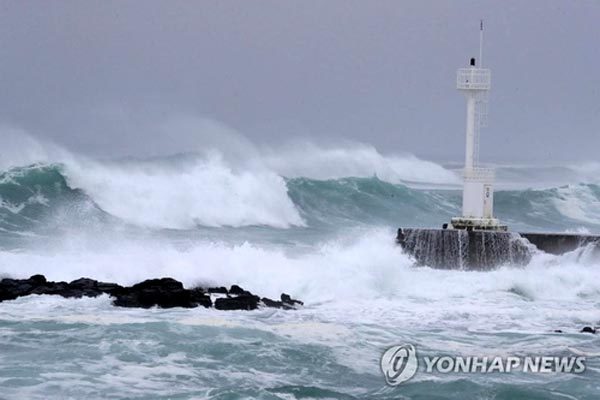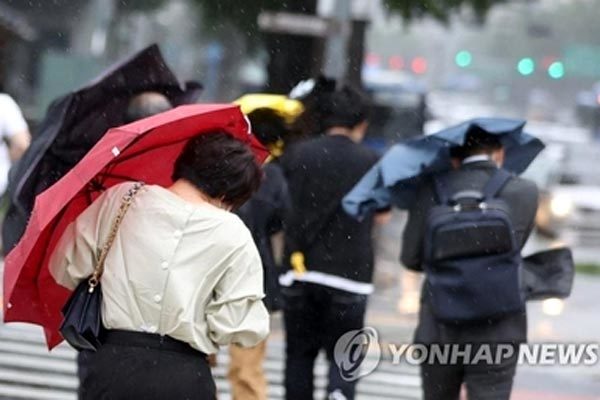Fishermen tied boats to avoid storms in Makurazaki
On September 6, Japan canceled more than 500 domestic flights, most of which were to and from the Kyushu region and the island of Okinawa. Companies that manage express trains to Kyushu suspended some operations on September 6 and canceled all services on September 7. West Japan Railway (JR West) is expected to cease operations of all Sanyo express trains between Hiroshima and Osaka Prefecture on September 7, while reducing the number of trains running between Shin-Osaka Station and Hiroshima Station.
According to Yonhap, South Korea's Central Disaster and Safety Countermeasure Headquarters raised the country's typhoon warning level to four - the highest - at 19:00 (10:00 GMT) on Sunday. Haishen, the 10th storm to hit Korea this year, is expected to enter the waters near the port city of Busan this morning, September 7.
 The sea was violently raging off the coast of Jeju on September 6 before the expected arrival of Typhoon Haishen. Photo: Yonhap
The sea was violently raging off the coast of Jeju on September 6 before the expected arrival of Typhoon Haishen. Photo: Yonhap
In response, the authorities called for the implementation of safety measures to protect residents, especially residents in coastal areas, houses near rivers and landslide prone areas. Authorities also asked central governments and provinces, public and private companies to flexibly adjust the start time of work to prevent possible damage while employees go to work.
The Korea Meteorological Administration (KMA) said that as of 9pm September 6, Typhoon Haishen was moving north at a speed of 31 kilometers per hour in waters about 120 km south-southwest of Japan's Kagoshima prefecture. Heavy rain with strong winds is forecast to occur across Korea today.
According to the KMA, Typhoon Haishen is expected to enter waters about 70km east-northeast of Gangneung region at 3pm today and into the area 110km south-southwest of Chongjin in North Korea at 9pm the same day.

South Korean President Moon Jae-in has instructed the Government and provincial governments to prepare thoroughly to prevent damage caused by the storm. "The safety of the people should be a top priority," said Moon.
The head of the Korean government also asked residents to limit access to coastal areas and underground routes, especially in areas that had been devastated by Typhoon Maysak earlier.